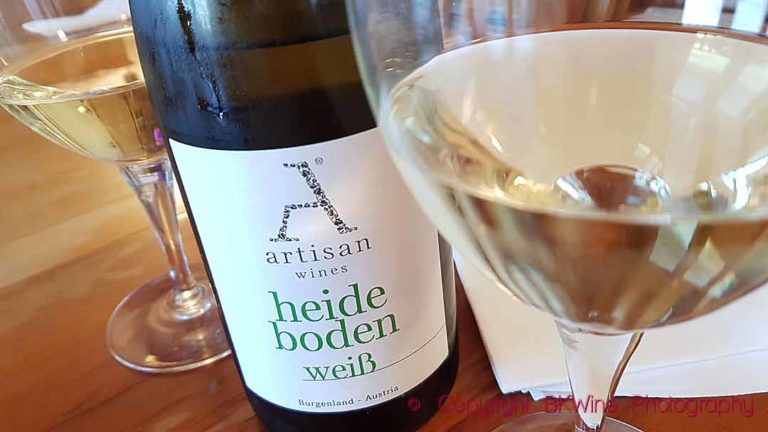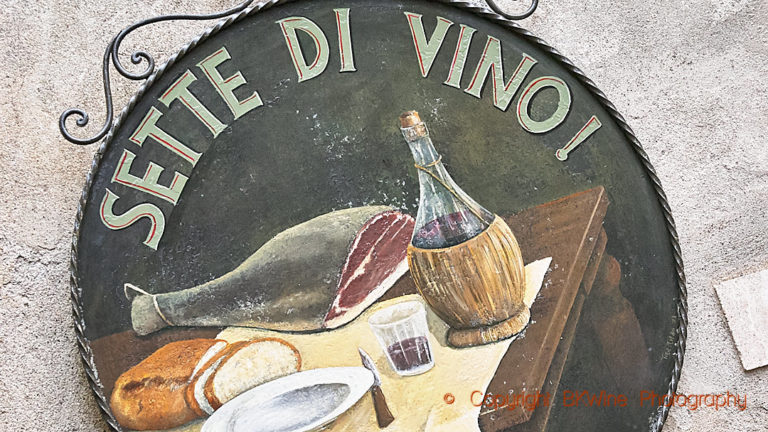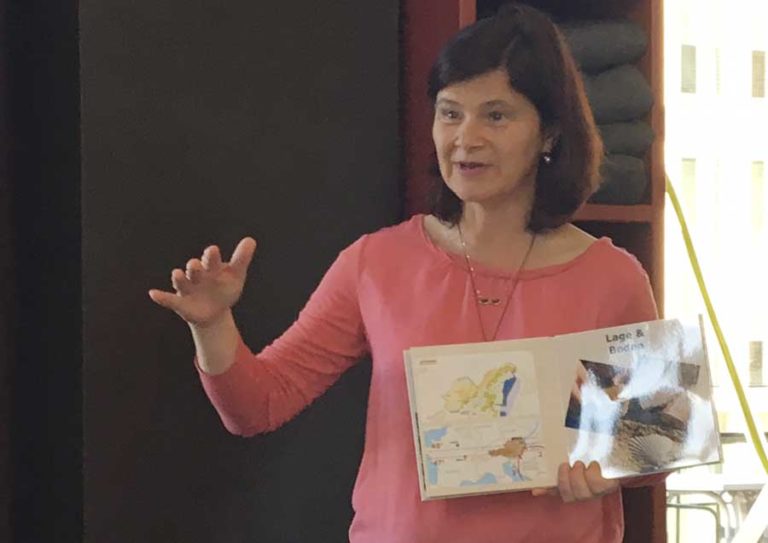The oldest wine estate in Austria, dating back to 985, has for the past 110 years housed a unique family of vintners.
The merchant Saahs family bought this run-down Wachau property from the church at the end of the 19th century. And for nearly four decades now, its driving force has been an environmentally conscious matriarch. Christine Saahs discovered Biodynamics in 1971, when she was given a book written by the Austrian founder of anthroposophical thought, Rudolf Steiner. Fascinated, she began applying its precepts to all aspects of her life, becoming the world’s first Biodynamic winegrower.
Text: David Furer
This article originally appeared in the December 2008 issue of Sommelier Journal, reposted with permission. The original article is available here.
As fierce an automobile driver as she is in her other modes of expression, Saahs tirelessly promotes her wines and her philosophy at international wine fairs, importer tastings, and, perhaps most significant, the numerous Renaissance des Appellations presentations led by the Loire’s Nicolas Joly.
Racing between Nikolaihof and the national horticultural school in nearby Langenlois one day last spring, Saahs points out the almost unending rows of chemically treated vines and the relative sterility of these vineyards. She says the spraying of herbicides is the most damaging aspect of chemical viticulture, but that fungicides are another problem because “microorganisms and fungi exist naturally in all soils, and plants need them both. Microorganisms are like a chef, and fungi like a waiter; the chef organizes the nutrients, and the fungi bring them to the consumer. Without the correct fungi, chemical fertilizers become necessary. When this happens, the plants become stuffed like an unbalanced goose or duck destined to become foie gras.”
Without the correct fungi, chemical fertilizers become necessary. When this happens, the plants become stuffed like an unbalanced goose or duck destined to become foie gras.
Dominating Nikolaihof’s courtyard is its century-old linden tree. Soon to be profiled in GEO magazine, it’s so massive that it cannot be photographed in its full glory. Over morning coffee beneath it, I ask Saahs (vintage 1951) to clarify her philosophy of life and viticulture. “It shows us the tools to work in our life,” she says of Steiner’s doctrine. “The difference between Biodynamic and organic agriculture is that you must work and live with Biodynamic principles in all parts of your life, not only in the vineyard. Every person has a duty to fulfill, every person has his destiny in his hands.”
Looking over the 2008 edition of one of the most important tools in the Biodynamic kit, Maria Thun’s calendar, Saahs explains that “our climate isn’t accidental. Sun, moon, and stars all are acting upon our environment. As well, whether I choose to drink coffee or soup isn’t accidental. Everything that we do and think and say is energy. It’s so important that we know that all our energies are important—the positive and the negative. There’s cause and effect from everything created by humans (microcosmos) and by the sun, moon, stars (macrocosmos). Genetically modified vines are an example of the energies of the microcosmos outstripping those of the macrocosmos and of the future coming too fast for what should best develop at a more natural pace.”
Everything that we do and think and say is energy.
Saahs and her husband, Klaus, have recently given hands-on responsibility for winemaking to their son Nikolaus (vintage 1980). Having the added benefit of a Geisenheim education, Nikolaus adheres to Biodynamic principles, but without the true-believer passion of his mother. He’s making a yet-to-be-named wine from their huge, wooden press, purportedly the world’s oldest in current use. And unlike many Austrian wineries, which keep old barrels around merely for show, Nikolaihof puts every wooden barrel in the cellar to active use.
The family opens its Weinstube , operating more as a restaurant than as a traditional Austrian Heurige , every spring through autumn, so it knows something about food, too. Founded by Christine Saahs in 1978, it serves organic and mostly local products. Even the restaurant’s cleaning is done with vinegar rather than chemicals.
Even the restaurant’s cleaning is done with vinegar rather than chemicals.
We lunch on an ancient grain called enkorn (akin to a gluten-reduced barley) with chicken in a saffron-cream sauce. In the Middle Ages, the production of high-quality saffron was common in the Wachau. That history prompted the Saahses to plant one acre in 2007—a first for Austria since its decline in the 1920s—making them the world’s only producer of biodynamically grown saffron. Our dish contains roughly half of the family’s initial harvest.
Toward the end of lunch, the rumble of thunder gathers from across the Danube, causing the family dog to hide in a cupboard. But the rain doesn’t descend upon Mautern. The Wachau is well known for being dry, and the Saahses’ hometown is even more so.
Mautern lies in the rain shadow of the Krems hillsides across the river to the north, where the top-rated vineyards are located. The climatic effect is so pronounced that the southern side of the bridge may stay dry while the northern side gets wet. “We are earlier with our harvest here in the Mauterner Becken (‘basin’),” Saahs says—typically two weeks earlier than in nearby Spitz and Weissenkirchen. In fact, the milder weather generally causes earlier flowering, which sometimes presents frost problems in the spring.
Nikolaihof’s flagship vineyard, accounting for about 4.5 acres of its 50 total acres of holdings, does lie across the river. Nikolaihof is the only owner making an internationally recognized wine from the Steiner Hund vineyard, literally “Rocky Dog”—its name derived from the difficulty involved in working it.
The Saahses’ Rocky Dog from the hot 2003 vintage, when many Austrian wines proved to be too much of a good thing, is phenolically ripe and dry at 12.5% alcohol, possessing clear, natural acidity without a trace of malolactic conversion. “Because of the way our vines are grown,” says Elisabeth Saahs (vintage 1973), “they’re more able to adapt to the weather changes of excess heat and hydric stress.”
The family also owns a portion of the Weingebirge, one of central Europe’s oldest vineyards, dating back to the 5th century A.D. But its most impressive winemaking tradition may be its Vinothek line. This wine rests virtually undisturbed, with little sulfur added, in a 3,000-liter, neutral-oak barrel at Nikolaihof until it is bottled in the spring—14 or more years after its harvest. Its enduring freshness and complexity attest to the conscientiousness of the Saahs family and to the efficacy of Biodynamic winemaking. Eric Zwiebel, MS, of England’s Summer Lodge Restaurant tells me, “I buy all the Vinothek offerings available to me. Some bottles are even consumed by my guests.”
About 55% of Nikolaihof’s total production is exported, 10% to the United States. In a nod to modernity, beginning with the 2005 vintage, the winery has been screwcapping its everyday wines, up to the Federspiel level.
As I spend a couple of hours helping the work crew shovel dirt for a new vineyard and strip extraneous leaves from the stalks, I notice the difference between the leaves on Nikolaihof’s Biodynamic vines and those in the other vineyards alongside them: the naturally treated ones face up toward the sun, while those treated with chemicals are confusedly facing both up and down. Scents of wild elder and chamomile drift by from the vineyard’s periphery; the Saahses collect the elder blossoms for syrup, which has sold so well that 2008 production has been increased by 65%, with most of that increase destined for the United States.
The naturally treated (biodynamic) vines face up toward the sun, while those treated with chemicals are confusedly facing both up and down.
Spreading the Saahs family’s Biodynamic principles farther afield are Christine’s sister, Ilsa Meier, who runs the nearby Geyerhof estate, and daughter Elisabeth, who, with her husband, Martin Samek, opened a 20-room hotel called Ad Vineas (Latin for “in the vines”) in 2008. Outfitted with natural, mostly local materials, it has no telephones; messages are relayed via each room’s TV. “We want to offer our guests a place to slow down and go their own way for a few days,” says Elisabeth. Ad Vineas is surrounded not only by vines and apricot trees, but by the aforementioned saffron field, thereby completing the full “Saahs circle” of wine, food, and accommodation.
Nikolaihof
Nikolaigasse 3
A-3512 Mautern/Wachau
Austria
+43-273-282901
www.nikolaihof.at
Importer: Michael Skurnik Wines
www.skurnikwines.com









